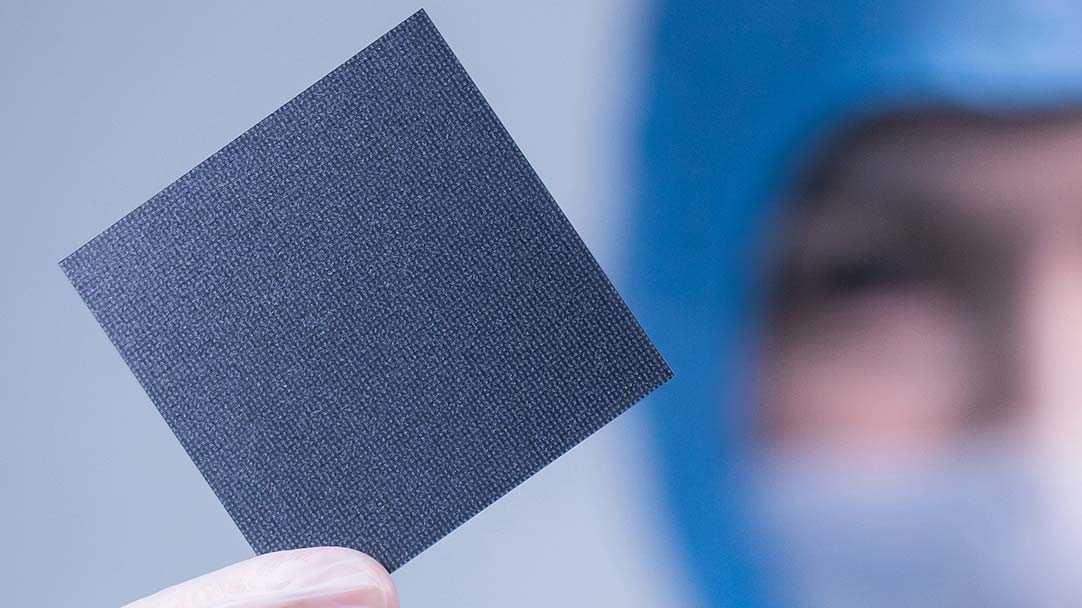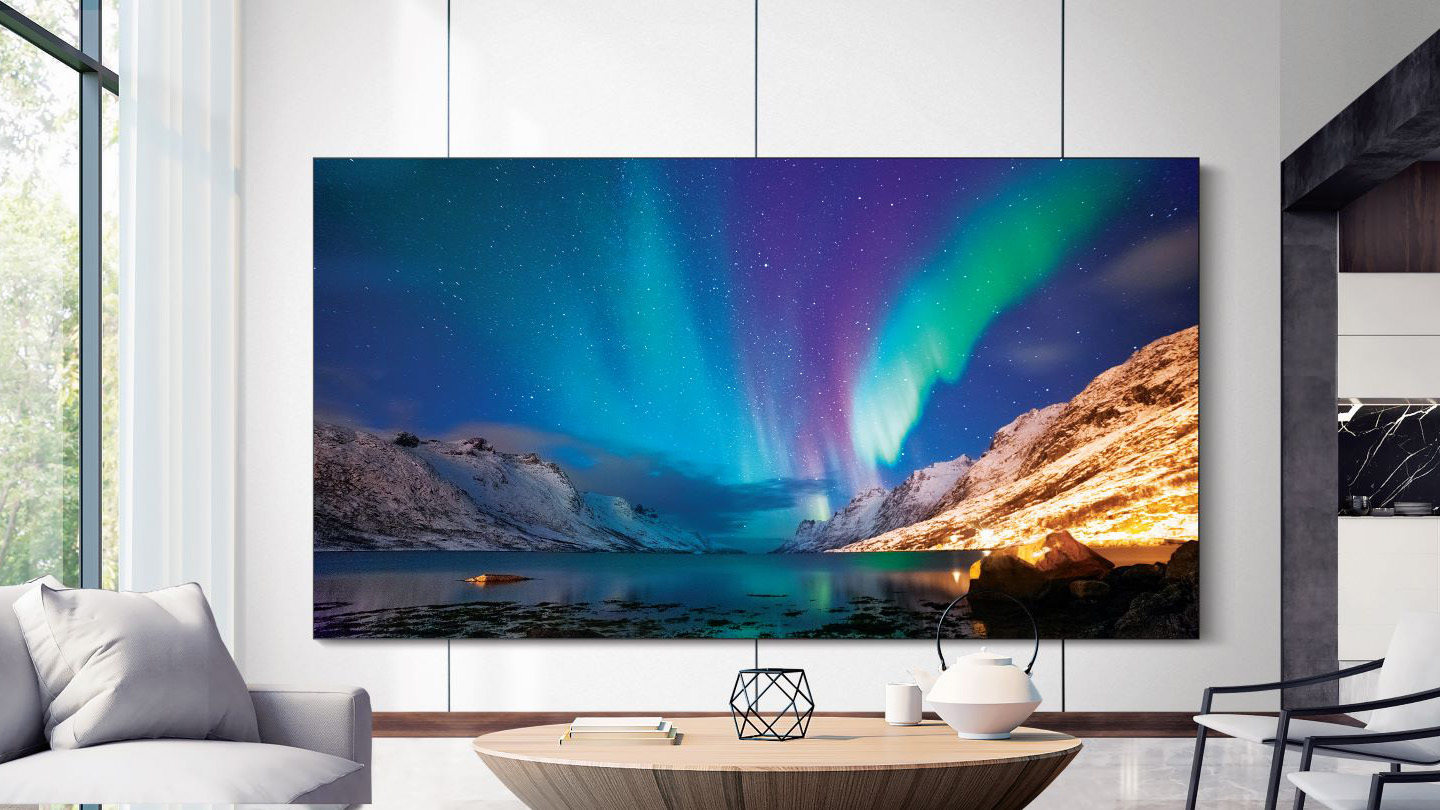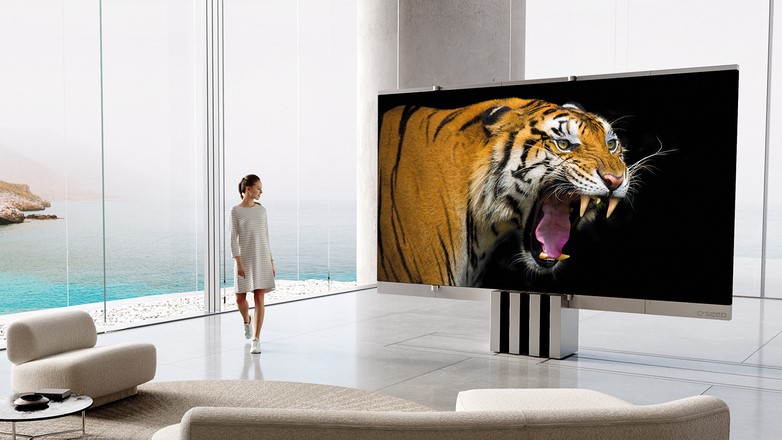Samsung MicroLED TVs are amazing — and too expensive to matter
If an innovative technology is priced too high, does it make a sound?

Samsung's been showing off MicroLED technology for years, and the first MicroLED TVs are finally going to be available for purchase this spring. It's a game-changing development for display technology, one that has the potential to reshape the TV industry and ripple out to every display in every gadget, from TVs and monitors to smartphones and wearables. It's a very big deal.
It's also insanely expensive.
Now, I know that when we start talking about new technology and innovative TVs, high price tags are just part of the game. Early adopters pay a premium to be the first on the block with the latest gadget, the newest feature, the slickest design. I get it, believe me, I do. I wouldn't have the career I've had without a deep-seated love of the latest and greatest tech.
But that's when we're talking about normal amounts of money.
- The best TVs right now
- Micro-LED vs OLED: Which TV tech will win?

The first OLED TV (with an asterisk or two on that designation) was the Sony XEL-1, back in 2007. It was a little 11-inch screen with 960x540 resolution, and it sold for $2,400. But at that size, it was hardly a serviceable TV, and more of a proof-of-concept.
The first honest-to-goodness consumer OLED TVs appeared in 2012, with the LG 55EM9600 and the Samsung Super OLED TV. When they reached the market in 2013, the LG sold for $12,000 and the Samsung KN55S9C was a little better at $9,000. I feel completely safe in saying that most people would consider either option to be too expensive.
Several years on, and we've seen the latest 8K models go for much more. When we reviewed the LG 88-Inch Z9 8K OLED TV back in 2019, it sold for $29,999. You can find the 98-inch Samsung Q900 Series 8K TV on Best Buy right now for $59,999, and the similar Sony Z9G Master Series 8K Android TV for the same $60k price.
Exorbitant prices aren't unusual in the world of premium TVs.

But the 110-inch MicroLED TV that Samsung will start selling this April? We haven't gotten official pricing for the North America version, but it's listed for pre-order in South Korea for 170 million won — $152,000 U.S. dollars.
That's as much as an Aston Martin Vantage. It's as much as a garage-full of 11 Ducati SuperSport 950 motorcycles (they're just $13,495 each). It's as much as four Rolex GMT-Master II watches in white gold (they sell for $38,250 apiece), enough to wear one on each wrist, and each ankle, too.
I'm sure I've hammered this particular point hard enough. The first MicroLED TVs aren't just expensive, they're going to be unattainable to almost everyone. And that raises some questions about what sort of sales Samsung can expect.
LG has its own highly anticipated TV, with sci-fi levels of innovation and inventiveness. The LG Signature OLED R 65RX blew minds when it was first demoed at CES, thanks to a rollable OLED display. Combining OLED with flexible glass and a sophisticated segmented backing, it's an astonishing bit of technology.
But it sells in Korea for 100 million won, and is expected to sell for $87,000 whenever it finally goes on sale here in North America.
Or maybe it doesn't sell at that price, because local business publication Korea JoongAng Daily reports that sales of the rollable OLED are a grand total of ten. For all of South Korea. (LG has refused to confirm this number, according to the report.)
Sure, $87,000 is a lot to pay for a 65-inch OLED TV, especially one that's only got 4K resolution and relies on a rolling and unrolling gimmick that's not only sure to get old when you want to fire up your TV, but also introduces worries about product durability as the TV screen flexes back and forth over and over again.
But on some level, there has to be a feeling even for the ultra-wealthy intended consumers looking at a TV like this and wondering, is this really worth it?
The 110-inch MicroLED TV may be larger. And it may be revolutionary. There aren't any durability issues, or patience-testing opening and closing processes. But at the end of the day, LG is asking people to spend a huge amount of money on a 4K TV. And to do it on a set that's not much bigger than even the largest OLED and QLED screens.
Think back to the 98-inch Samsung Q900 8K TV, which offers better resolution. Yes, the price is still absurdly high, but compared to the MicroLED TV, it's now affordable enough to let you buy two, and still have $30k left over for a couple of those Ducati motorcycles.
I get that some people are rich enough to blow stupidly large amounts of money on new toys and the latest tech, but even billionaire playboys want to get a reasonable amount of value from their money, right?

I could be wrong. Maybe the uber-rich have been riding out the pandemic on their super-yachts, just wondering what they can buy that would cost more than a mint-condition Fleer 1986-87 Michael Jordan rookie card. After all, the foldable C-Seed M1 Micro-LED TV is an even more ridiculous $400,000. That TV pops out of your floor, and it’s amazing to look at, for what it’s worth.
Maybe the MicroLED TV will sell, despite costing enough to require a second mortgage. And maybe the smaller models coming out later this year will be priced a little better. But I doubt it.
If the largest model, with the lowest pixel density is selling first, it's because Samsung has been able to produce it more easily than the smaller screen sizes they've promised. And while the price for the upcoming 99-inch and 88-inch models could theoretically be anything, I don't expect them to be drastically different than the 110-inch model that's going on sale first. If anything, they could actually be more expensive.
But even a $10,000 price drop would be a drop in the bucket. Which leaves me wondering just one thing. Micro-LED technology promises to upend the order of the display world, but will Micro-LED TVs ever be affordable enough to make a difference? Or will the price of this innovation be too high for it to ever be a product that normal people can buy? How game-changing can a technology be if it's priced out of the game?
- TV buying guide: 9 things you need to know
Sign up to get the BEST of Tom's Guide direct to your inbox.
Get instant access to breaking news, the hottest reviews, great deals and helpful tips.
Brian Westover is currently Lead Analyst, PCs and Hardware at PCMag. Until recently, however, he was Senior Editor at Tom's Guide, where he led the site's TV coverage for several years, reviewing scores of sets and writing about everything from 8K to HDR to HDMI 2.1. He also put his computing knowledge to good use by reviewing many PCs and Mac devices, and also led our router and home networking coverage. Prior to joining Tom's Guide, he wrote for TopTenReviews and PCMag.

